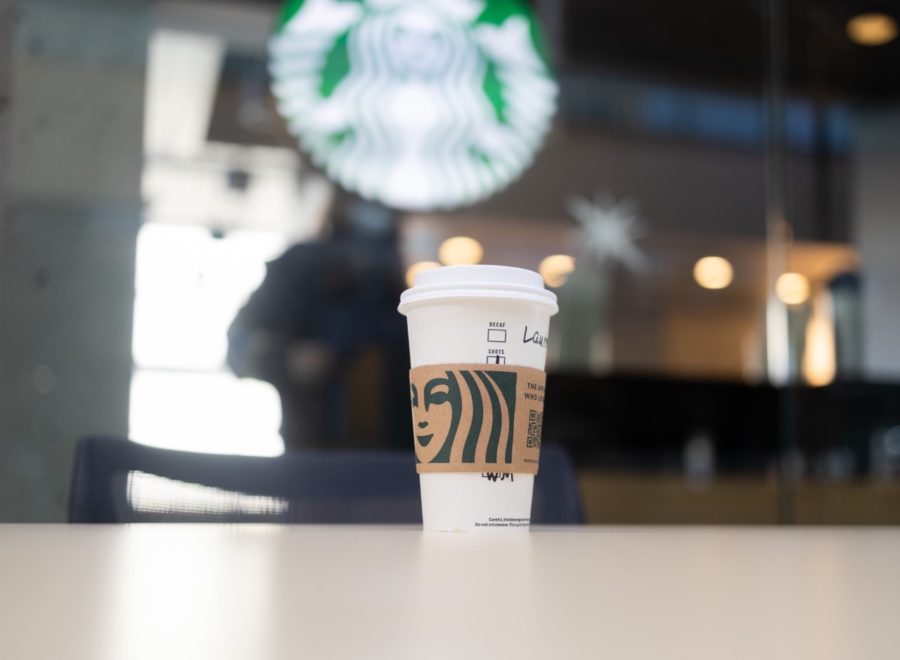How a coffee crisis could hound NKU
A combination of factors pose a threat to coffee production and sale that could raise prices and lower quality.
March 13, 2022
Coffee is a fixture in American culture that has dependably fueled people’s daily routines for centuries, but a combination of factors—unstable weather patterns and supply chain constraints—pose a threat to coffee production and sale that could raise prices and lower quality. In a culture so strongly attached to coffee, the exacerbation of these circumstances could cause a frenzy.
Arabica and Robusta beans constitute nearly all the coffee produced for global trade and commercial consumption, but rising temperatures are expected to diminish the areas suitable for harvesting commercially produced coffee by up to 50 percent by 2050, according to Inter-American Development Bank, an organization that supports Latin American and Caribbean economic and social development.
The effects of rising temperatures on coffee production are compounded by the increased likelihood of pests, diseases and water stress that can spoil harvests, according to a research publication by the National Research Institute and University of Greenwich.
Environmental threats to coffee agriculture have the potential to curb the livelihood of all members of the coffee industry. Coffee is exported from where it is cultivated and roasted into its consumable form elsewhere—a process further disrupted by current global supply chain constraints.
In the future, yields of lower quality and quantity could be a blow to coffee farmers, reverberating to the factories that depend on their raw materials to refine the product and all the way to the countless coffee-dependent citizens looking for their boost.
The impacts of these developments are already prevailing, with coffee futures reaching $2.58 per pound in Feb.2022, a 10-year high that has been steadily mounting.
But what does all this mean for us? It is no secret that coffee serves a prominent role in our culture and daily lives. Over 50 percent of Americans drink coffee daily, according to E-Imports.
Advancing through college is a chaotic and demanding process, and college campuses are loaded with coffee drinkers that drink the beverage to lift energy amid their busy schedules. Look at the on-campus coffee spots and you will find constantly steady crowds; look around campus on your way to class and you will see countless students gripping coffee cups.
“College students are busy. There’s a lot of things to do and not enough hours in the day,” said NKU student Barrett Minks.
Getting a cup of coffee with friends is also a sort of routine interpersonal experience where students can unwind and rejuvenate together. The time-old coffee break is ritualized in our culture, and it can be a tempting pastime for college students encompassed by peers in a social atmosphere—even if it comes at a price.
Student Evan Rogers discussed his torn relationship with regular trips to coffee shops as prices—particularly those at shops on campus—have become more and more inflated.
“I moved on campus, and you have to get the meal plan, and I was like, ‘I might as well get flex while I’m here.’ And now everybody’s like, ‘Let’s go to Starbucks,’ all the time and I’m like, ‘Yeah, alright,’” Rogers said.
For many people, the convenience and satisfaction of coffee outweighs the financial forfeit, making the impact of continuing possible price surges an interesting trend to track.
In a culture where drinking coffee is ubiquitous, it seems almost inevitable that if you acquire the taste for it, then it will make its way into your regular routine.
“I think I started drinking coffee because I saw my parents drinking coffee,” said NKU student Paydon Neiser.
Drinking a daily cup of coffee is a habit that has become a cultural norm; a habit not everyone necessarily needs but one that often lasts a lifetime. Regardless of how or why college students started drinking coffee, it has become something many rely on to support a busy lifestyle.
“We adopt the things that we see around us,” Neiser said. “We don’t always do things for the reasons that we think.”
When asked about the effects the persistence of rising coffee prices would have on college campuses, Rogers likened the public’s penchant for coffee to purchasing gasoline amid soaring prices.
“If Starbucks or Einstein’s raised their price like $1.00, $1.50, it’s like, what am I going to do? Not get coffee? What am I going to do? Not get gas?” Rogers said mockingly.
Evidently, there is some resemblance between gasoline with cars and coffee with humans. People love coffee as a source of vitalization to their busy and involved lifestyles, and life may not be the same without it. Although increased prices for coffee may be met with displeasure, its position in this culture will likely be perennial—barring climatic catastrophe making it unobtainable.

